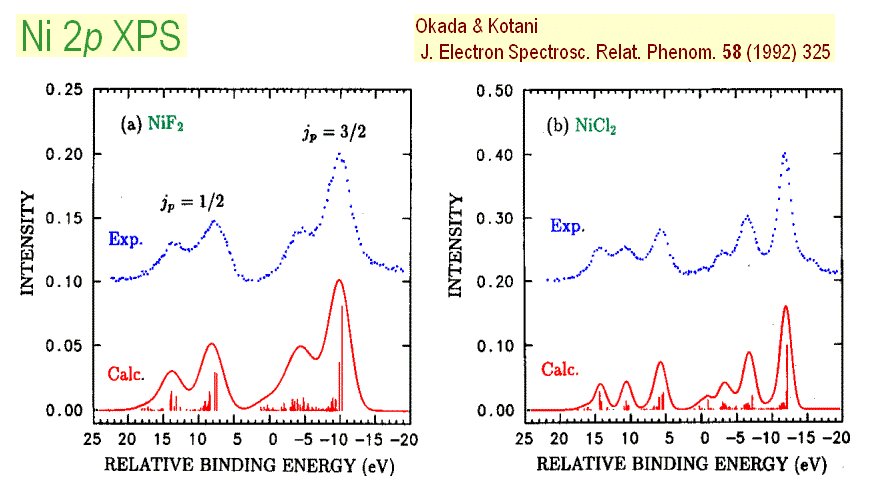A brief introduction to
"Theory of high-energy spectroscopies
"Theory of high-energy spectroscopies
for highly-correlated electron systems"
As the above title indicates, my present interest is focused on theoritical studies on high-energy spectroscopies for highly-correlated electron systems. There are two keywords: highly-correlated electron systems and high-energy spectroscopies.
The target materials of the present study belong to so-called "highly-correlated electron systems" , such as transition-metal compounds, rare-earth compounds, actinide compounds and so on. They are candidates for forthcoming functional materials which will improve our daily life.
High-energy spectroscopies are experimetal techniques with high-energy X-rays or electron beams. In the case of X-ray photoelectron spectroscopy (XPS), targets are irradiated with X-rays and photoelectrons emitted from the targets are detected. The photoelectrons carry much information on the electronic states of the target electron systems.
XPS has been used since 1970s. In the early stage, light source is limited to X-ray tubes. Therefore the X-ray energy was not tunable. However, recent synchrotron radiaion sources provide us with tunable lights from UV to hard-X-rays. Recent improvements on experimental resolusion are also to be noted.
As the word "High-energy spectroscopies" indicates, we treat high energy excitations. In the case of Cu 2p core level photoemission, a Cu 2p core electon is excited to a free electron state. The binding energy of Cu 2p level is more than 900eV. A created Cu 2p core hole interacts with valence electron systems. The interaction energy is about 10eV. Thus, theories for Cu 2p XPS must treat a wide energy range, compared with that for electrical or thermal properties. Moreover, new spectroscopies have been proposed with use of recent synchrotron light sources, which urges us to construct theories for spectral analysis.
The purpose of the present study is twofold. One is to investigate the electronic structures of highly-correlated electron systems. The other is to construct theories for new high-energy spectroscopies.

The red curves are theoretical results obtained by taking into account those effects. They reproduce the characteristic features seen in the experiment fairly well. Through such spectral analyses, we can get informtaion on the electronic structures of these compounds.